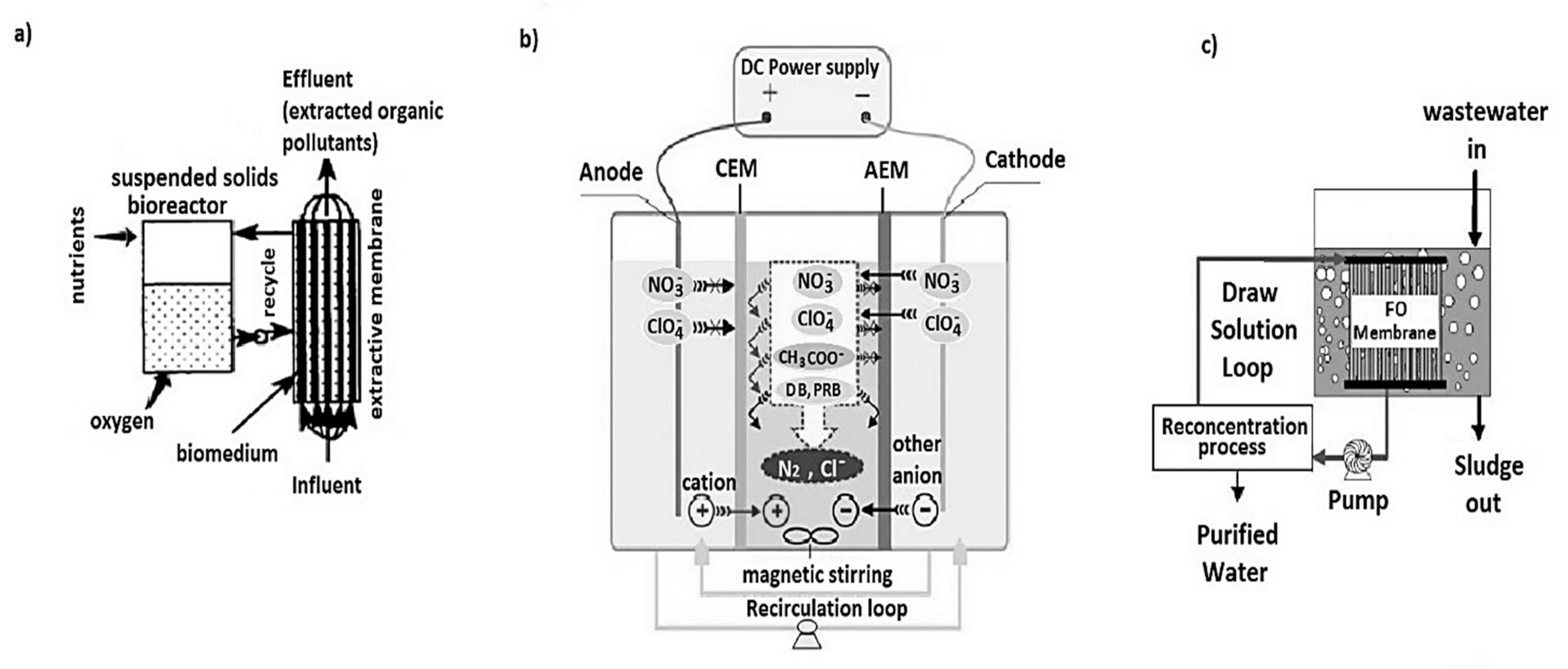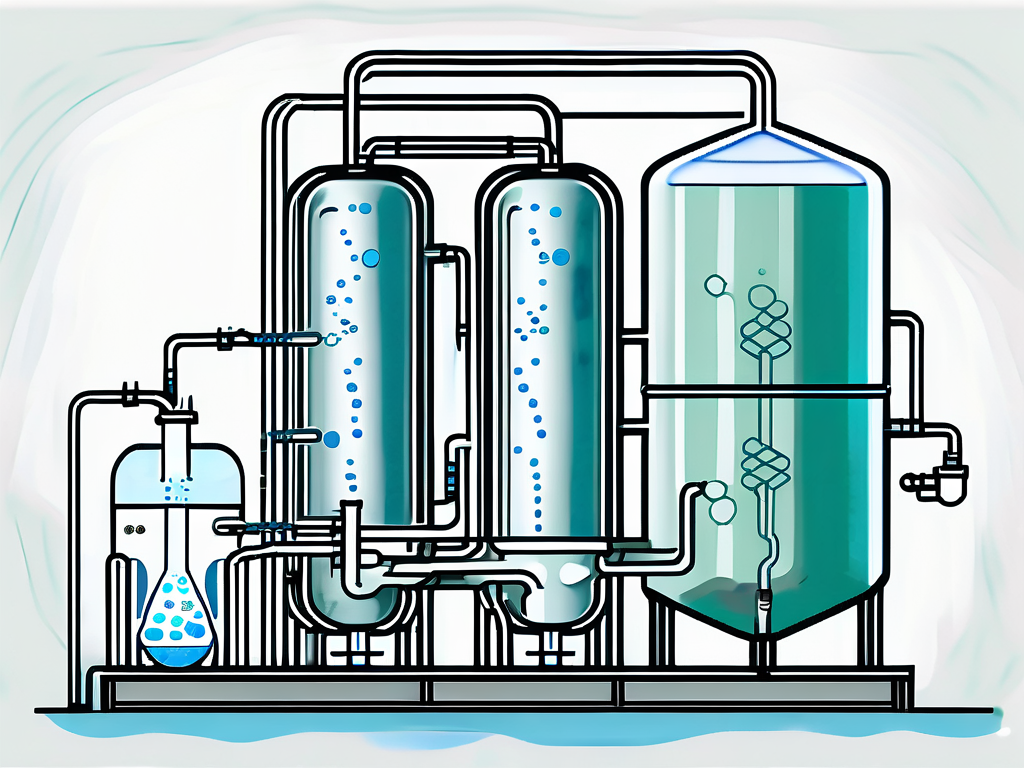How Membrane Bioreactor Technology Is Revolutionizing Wastewater Treatment
Wiki Article
The Advantages of Membrane Bioreactors in Sustainable Wastewater Management
Membrane layer bioreactors (MBRs) stand for a pivotal improvement in sustainable wastewater management, successfully combining organic therapy with sophisticated membrane purification technology. As the need for sustainable remedies escalates, exploring the complex benefits of MBRs might disclose unforeseen implications for the future of wastewater treatment systems.Overview of Membrane Layer Bioreactors
Membrane bioreactors (MBRs) stand for a substantial advancement in wastewater therapy modern technology, integrating organic deterioration with membrane purification to enhance the effectiveness of the therapy process. This cutting-edge system incorporates the advantages of traditional turned on sludge procedures with membrane modern technology, permitting for boosted solid-liquid separation. MBRs make use of semi-permeable membrane layers to separate treated water from biomass, leading to top quality effluent that can be reused or safely discharged right into the atmosphere.The operational design of MBRs generally involves a bioreactor where microbes break down raw material, adhered to by a membrane layer unit that filters the combined liquor. This configuration not just decreases the impact of the therapy facility but also enables for greater biomass concentrations and lowered hydraulic retention times. Moreover, MBRs are qualified of treating a bigger range of impurities, including nutrients and pathogens, making them ideal for various applications, from local wastewater therapy to industrial effluent processing.
The assimilation of MBRs right into wastewater monitoring systems is indicative of a growing pattern towards lasting and effective techniques in environmental design. Their capacity to produce high-quality effluent while decreasing room requirements placements MBR modern technology as a vital gamer in modern wastewater therapy solutions.
Boosted Effluent Quality

The membrane layer purification process acts as a physical barrier, enabling the retention of microbes and particulate matter, which adds to a more clear and cleaner effluent (Membrane Bioreactor). Additionally, MBRs operate at greater biomass focus than conventional turned on sludge systems, promoting more efficient biodegradation of contaminants. This leads to a reduction in biochemical oxygen demand (BOD) and complete put on hold solids (TSS) levels in the final effluent
Additionally, MBRs show outstanding efficiency in treating tough wastewater structures, such as industrial effluents and wastewater with high nutrient loads. Therefore, the effluent produced is commonly of higher top quality, allowing for even more adaptable disposal alternatives and minimized ecological impact. Ultimately, the enhanced effluent high quality accomplished with MBR innovation highlights its essential role ahead of time lasting wastewater administration practices.
Water Reuse Opportunities
The premium effluent created by membrane layer bioreactors (MBRs) opens significant possibilities for water reuse in different applications. MBRs effectively get rid of contaminants, consisting of virus, suspended solids, and organic matter, leading to treated water that meets or surpasses regulative standards for reuse. This quality permits the application of water recycling initiatives across varied fields.One prominent application remains in farming, where treated wastewater can be used for watering, advertising sustainable farming practices while preserving freshwater sources. In addition, MBR-treated effluent can be utilized for commercial procedures such as cooling, cleaning, and as a procedure water source, dramatically lowering the demand for drinkable water in these procedures.
In metropolitan environments, MBRs facilitate the use of reclaimed water for landscape irrigation, toilet flushing, and various other non-potable usages, adding to the total strength of supply of water systems. The assimilation of MBR modern technology in decentralized systems aids in handling local water demands, specifically in water-scarce regions.
Minimized Ecological Influence
Just how can the fostering of membrane layer bioreactors (MBRs) add to a decreased environmental effect in wastewater administration? MBRs significantly improve the treatment efficiency of visit this web-site wastewater while lessening eco-friendly disruptions. Membrane Bioreactor.In addition, MBRs operate at reduced hydraulic retention times contrasted to traditional systems, resulting in smaller treatment plant impacts. This portable layout reduces land use, thus maintaining all-natural habitats and biodiversity. The procedure also produces less sludge than typical techniques, minimizing disposal obstacles and lowering greenhouse gas discharges connected with sludge monitoring.
Furthermore, MBRs facilitate the recovery of beneficial sources, such as water and nutrients, adding to a circular economy. By allowing water reuse for irrigation or commercial procedures, MBRs aid reduce freshwater deficiency, thus promoting lasting water utilize methods. Ultimately, the adoption of MBR technology represents a considerable stride towards lessening the ecological influence of wastewater monitoring systems.
Economic Advantages of MBRs

Furthermore, MBRs promote the production of top quality effluent, which can be recycled for various applications, such as agricultural watering and industrial processes - Membrane Bioreactor. This reuse capacity can significantly lower water procurement prices, offering a financial reward for sectors encountering strict water guidelines
The portable style of MBR systems also leads to decreased land requirements, which is especially useful in city locations where property is expensive. By decreasing room, markets and municipalities can conserve on land acquisition and upkeep expenditures.
Furthermore, MBRs often call for much less frequent upkeep and have a longer lifespan than standard systems, even more adding to set you back savings. In summary, the financial advantages of MBRs-- ranging from lowered operational expenses to land savings and effluent reuse-- make them a compelling choice for sustainable wastewater administration, providing both lasting and immediate monetary benefits.
Conclusion
Membrane bioreactors stand for a transformative technique to lasting wastewater monitoring, integrating organic therapy with advanced membrane layer purification for exceptional effluent top quality. Their ability for effective contaminant elimination facilitates water reuse, thereby preserving important freshwater resources. Additionally, MBRs contribute to minimized environmental effects with portable designs and lower sludge generation. Economic advantages even more enhance their feasibility, making MBRs an encouraging remedy for addressing the challenges of wastewater treatment and promoting lasting resource management.
Membrane bioreactors (MBRs) represent an essential innovation in lasting wastewater administration, effectively Learn More Here merging organic therapy with advanced membrane filtration technology.Membrane layer bioreactors (MBRs) represent a significant development in wastewater therapy innovation, incorporating biological degradation with membrane layer purification to boost the effectiveness of the therapy procedure.Accomplishing improved effluent quality is one of the most substantial advantages of utilizing membrane layer bioreactors (MBRs) in wastewater therapy.In addition, MBRs show excellent efficiency in treating tough wastewater structures, such as commercial effluents and wastewater with high nutrient loads.Incorporating membrane layer bioreactors (MBRs) into wastewater management not just minimizes environmental impact however likewise Your Domain Name provides significant economic benefits.
Report this wiki page